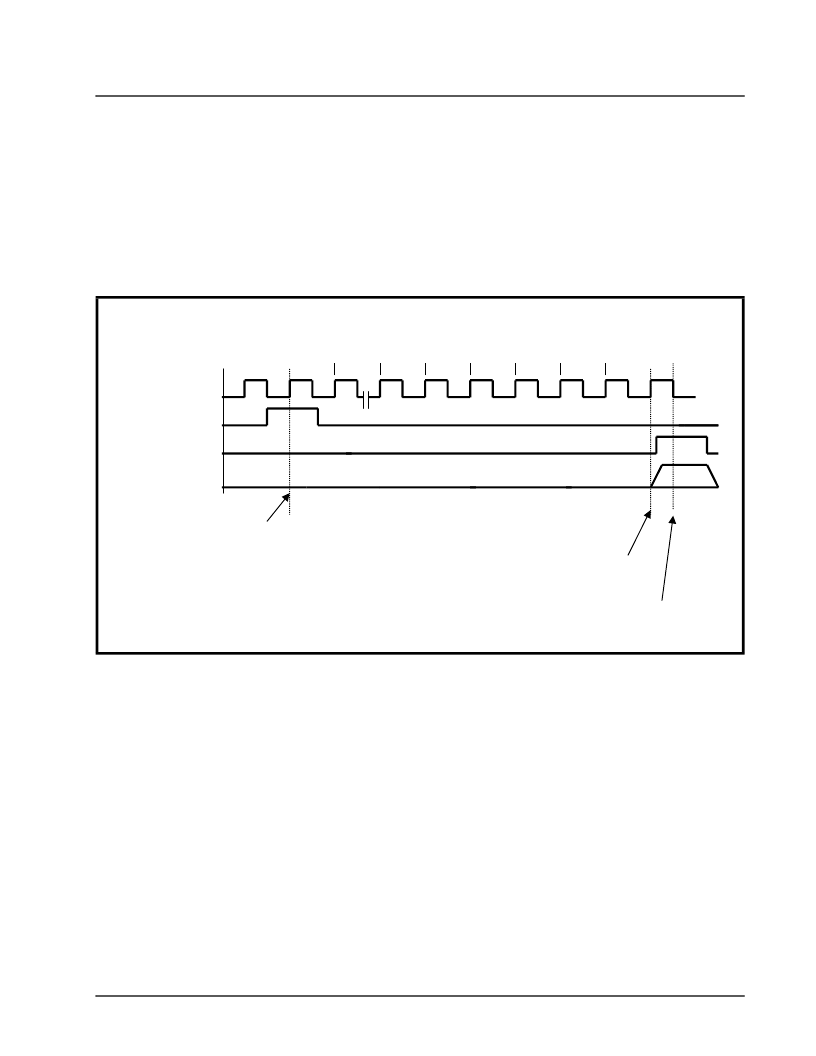- 您現(xiàn)在的位置:買賣IC網(wǎng) > PDF目錄376461 > XRT72L56 (Exar Corporation) Ultraframer DS3/E3/DS2/E2/DS1/E1/DS0 PDF資料下載
參數(shù)資料
| 型號(hào): | XRT72L56 |
| 廠商: | Exar Corporation |
| 元件分類: | 通信及網(wǎng)絡(luò) |
| 英文描述: | Ultraframer DS3/E3/DS2/E2/DS1/E1/DS0 |
| 中文描述: | Ultraframer DS3/E3/DS2/E2/DS1/E1/DS0 |
| 文件頁數(shù): | 397/486頁 |
| 文件大小: | 6035K |
| 代理商: | XRT72L56 |
第1頁第2頁第3頁第4頁第5頁第6頁第7頁第8頁第9頁第10頁第11頁第12頁第13頁第14頁第15頁第16頁第17頁第18頁第19頁第20頁第21頁第22頁第23頁第24頁第25頁第26頁第27頁第28頁第29頁第30頁第31頁第32頁第33頁第34頁第35頁第36頁第37頁第38頁第39頁第40頁第41頁第42頁第43頁第44頁第45頁第46頁第47頁第48頁第49頁第50頁第51頁第52頁第53頁第54頁第55頁第56頁第57頁第58頁第59頁第60頁第61頁第62頁第63頁第64頁第65頁第66頁第67頁第68頁第69頁第70頁第71頁第72頁第73頁第74頁第75頁第76頁第77頁第78頁第79頁第80頁第81頁第82頁第83頁第84頁第85頁第86頁第87頁第88頁第89頁第90頁第91頁第92頁第93頁第94頁第95頁第96頁第97頁第98頁第99頁第100頁第101頁第102頁第103頁第104頁第105頁第106頁第107頁第108頁第109頁第110頁第111頁第112頁第113頁第114頁第115頁第116頁第117頁第118頁第119頁第120頁第121頁第122頁第123頁第124頁第125頁第126頁第127頁第128頁第129頁第130頁第131頁第132頁第133頁第134頁第135頁第136頁第137頁第138頁第139頁第140頁第141頁第142頁第143頁第144頁第145頁第146頁第147頁第148頁第149頁第150頁第151頁第152頁第153頁第154頁第155頁第156頁第157頁第158頁第159頁第160頁第161頁第162頁第163頁第164頁第165頁第166頁第167頁第168頁第169頁第170頁第171頁第172頁第173頁第174頁第175頁第176頁第177頁第178頁第179頁第180頁第181頁第182頁第183頁第184頁第185頁第186頁第187頁第188頁第189頁第190頁第191頁第192頁第193頁第194頁第195頁第196頁第197頁第198頁第199頁第200頁第201頁第202頁第203頁第204頁第205頁第206頁第207頁第208頁第209頁第210頁第211頁第212頁第213頁第214頁第215頁第216頁第217頁第218頁第219頁第220頁第221頁第222頁第223頁第224頁第225頁第226頁第227頁第228頁第229頁第230頁第231頁第232頁第233頁第234頁第235頁第236頁第237頁第238頁第239頁第240頁第241頁第242頁第243頁第244頁第245頁第246頁第247頁第248頁第249頁第250頁第251頁第252頁第253頁第254頁第255頁第256頁第257頁第258頁第259頁第260頁第261頁第262頁第263頁第264頁第265頁第266頁第267頁第268頁第269頁第270頁第271頁第272頁第273頁第274頁第275頁第276頁第277頁第278頁第279頁第280頁第281頁第282頁第283頁第284頁第285頁第286頁第287頁第288頁第289頁第290頁第291頁第292頁第293頁第294頁第295頁第296頁第297頁第298頁第299頁第300頁第301頁第302頁第303頁第304頁第305頁第306頁第307頁第308頁第309頁第310頁第311頁第312頁第313頁第314頁第315頁第316頁第317頁第318頁第319頁第320頁第321頁第322頁第323頁第324頁第325頁第326頁第327頁第328頁第329頁第330頁第331頁第332頁第333頁第334頁第335頁第336頁第337頁第338頁第339頁第340頁第341頁第342頁第343頁第344頁第345頁第346頁第347頁第348頁第349頁第350頁第351頁第352頁第353頁第354頁第355頁第356頁第357頁第358頁第359頁第360頁第361頁第362頁第363頁第364頁第365頁第366頁第367頁第368頁第369頁第370頁第371頁第372頁第373頁第374頁第375頁第376頁第377頁第378頁第379頁第380頁第381頁第382頁第383頁第384頁第385頁第386頁第387頁第388頁第389頁第390頁第391頁第392頁第393頁第394頁第395頁第396頁當(dāng)前第397頁第398頁第399頁第400頁第401頁第402頁第403頁第404頁第405頁第406頁第407頁第408頁第409頁第410頁第411頁第412頁第413頁第414頁第415頁第416頁第417頁第418頁第419頁第420頁第421頁第422頁第423頁第424頁第425頁第426頁第427頁第428頁第429頁第430頁第431頁第432頁第433頁第434頁第435頁第436頁第437頁第438頁第439頁第440頁第441頁第442頁第443頁第444頁第445頁第446頁第447頁第448頁第449頁第450頁第451頁第452頁第453頁第454頁第455頁第456頁第457頁第458頁第459頁第460頁第461頁第462頁第463頁第464頁第465頁第466頁第467頁第468頁第469頁第470頁第471頁第472頁第473頁第474頁第475頁第476頁第477頁第478頁第479頁第480頁第481頁第482頁第483頁第484頁第485頁第486頁

á
XRT72L56
SIX CHANNEL DS3/E3 FRAMER IC WITH HDLC CONTROLLER
PRELIMINARY
REV. P1.1.2
378
Method 1) in order to transmit a Yellow Alarm to
the remote terminal equipment.
In this example, the Terminal Equipment intends to in-
sert the appropriate overhead bits, into the Transmit
Overhead Data Input Interface, such that the
XRT72L56 will transmit a Yellow Alarm to the remote
terminal equipment. Recall that, for E3 Applications,
a Yellow Alarm is transmitted by setting the FERF bit
(within the MA Byte) to "0".
If one assumes that the connection between the Ter-
minal Equipment and the XRT72L56 are as illustrated
in Figure 170 then Figure 171 presents an illustration
of the signaling that must go on between the Terminal
Equipment and the XRT72L56.
In Figure 171 the Terminal Equipment samples the
TxOHFrame signal being "High" at rising clock edge #
“0". From this point, the Terminal Equipment waits
until it has detected 32 rising edges in the TxOHClk
signal. At this point, the Terminal Equipment knows
that the XRT72L56 is just about to process the FERF
bit within the MA byte (in a given Outbound E3
frame). Additionally, according to Table 74, the 32nd
overhead bit to be processed is the FERF bit. In or-
der to facilitate the transmission of the Yellow Alarm,
the Terminal Equipment must set this FERF bit to "1".
Hence, the Terminal Equipment starts this process by
implementing the following steps concurrently.
a.
Assert the TxOHIns input pin by setting it "High".
b.
Set the TxOH input pin to "0".
After the Terminal Equipment has applied these sig-
nals, the XRT72L56 will sample the data on both the
TxOHIns and TxOH signals upon the very next falling
edge of TxOHClk (designated at 32- in Figure 171).
Once the XRT72L56 has sampled this data, it will
then insert a "1" into the FERF bit position, in the Out-
bound E3 frame.
Upon detection of the very next rising edge of the Tx-
OHClk clock signal (designated as clock edge 1 in
Figure 171), the Terminal Equipment will negate the
TxOHIns signal (e.g., toggles it "Low") and will cease
inserting data into the Transmit Overhead Data Input
Interface.
6.2.2.2
Method 2 - Using the TxInClk and
TxOHEnable Signals
Method 1 requires the use of an additional clock sig-
nal, TxOHClk. However, there may be a situation in
which the user does not wish to add this extra clock
signal to their design, in order to use the Transmit
Overhead Data Input Interface. Hence, Method 2 is
available. When using Method 2, either the TxInClk
or RxOutClk signal is used to sample the overhead
bits and signals which are input to the Transmit Over-
F
IGURE
171. I
LLUSTRATION
OF
THE
SIGNAL
THAT
MUST
OCCUR
BETWEEN
THE
T
ERMINAL
E
QUIPMENT
AND
THE
XRT72L56,
IN
ORDER
TO
CONFIGURE
THE
XRT72L56
TO
TRANSMIT
A
Y
ELLOW
A
LARM
TO
THE
REMOTE
TERMINAL
EQUIPMENT
Terminal Equipment/XRT72L5x Interface Signals
TxOHClk
TxOHIns
TxOHFrame
TxOH
Remaining Overhead Bits with E3 Frame
MA, Bit 7
TxOHFrame is sample “high”
Terminal Equipment asserts TxOHIns and
Data on TxOH line.
0 1 26 27 28 29 30 31 32
XRT72L5x Framer samples TxOHIns and
TxOHIns signal
相關(guān)PDF資料 |
PDF描述 |
|---|---|
| XRT72L58IB | Ultraframer DS3/E3/DS2/E2/DS1/E1/DS0 |
| XRT72L58 | Ultraframer DS3/E3/DS2/E2/DS1/E1/DS0 |
| XRT72L71 | Ultraframer DS3/E3/DS2/E2/DS1/E1/DS0 |
| XRT72L73 | Ultraframer DS3/E3/DS2/E2/DS1/E1/DS0 |
| XRT72L74 | Ultraframer DS3/E3/DS2/E2/DS1/E1/DS0 |
相關(guān)代理商/技術(shù)參數(shù) |
參數(shù)描述 |
|---|---|
| XRT72L56ES-PCI | 功能描述:網(wǎng)絡(luò)控制器與處理器 IC RoHS:否 制造商:Micrel 產(chǎn)品:Controller Area Network (CAN) 收發(fā)器數(shù)量: 數(shù)據(jù)速率: 電源電流(最大值):595 mA 最大工作溫度:+ 85 C 安裝風(fēng)格:SMD/SMT 封裝 / 箱體:PBGA-400 封裝:Tray |
| XRT72L56IB | 功能描述:網(wǎng)絡(luò)控制器與處理器 IC RoHS:否 制造商:Micrel 產(chǎn)品:Controller Area Network (CAN) 收發(fā)器數(shù)量: 數(shù)據(jù)速率: 電源電流(最大值):595 mA 最大工作溫度:+ 85 C 安裝風(fēng)格:SMD/SMT 封裝 / 箱體:PBGA-400 封裝:Tray |
| XRT72L58 | 制造商:EXAR 制造商全稱:EXAR 功能描述:EIGHT CHANNEL DS3/E3 FRAMER IC WITH HDLC CONTROLLER |
| XRT72L58ES-PCI | 功能描述:網(wǎng)絡(luò)控制器與處理器 IC RoHS:否 制造商:Micrel 產(chǎn)品:Controller Area Network (CAN) 收發(fā)器數(shù)量: 數(shù)據(jù)速率: 電源電流(最大值):595 mA 最大工作溫度:+ 85 C 安裝風(fēng)格:SMD/SMT 封裝 / 箱體:PBGA-400 封裝:Tray |
| XRT72L58IB | 功能描述:網(wǎng)絡(luò)控制器與處理器 IC RoHS:否 制造商:Micrel 產(chǎn)品:Controller Area Network (CAN) 收發(fā)器數(shù)量: 數(shù)據(jù)速率: 電源電流(最大值):595 mA 最大工作溫度:+ 85 C 安裝風(fēng)格:SMD/SMT 封裝 / 箱體:PBGA-400 封裝:Tray |
發(fā)布緊急采購,3分鐘左右您將得到回復(fù)。